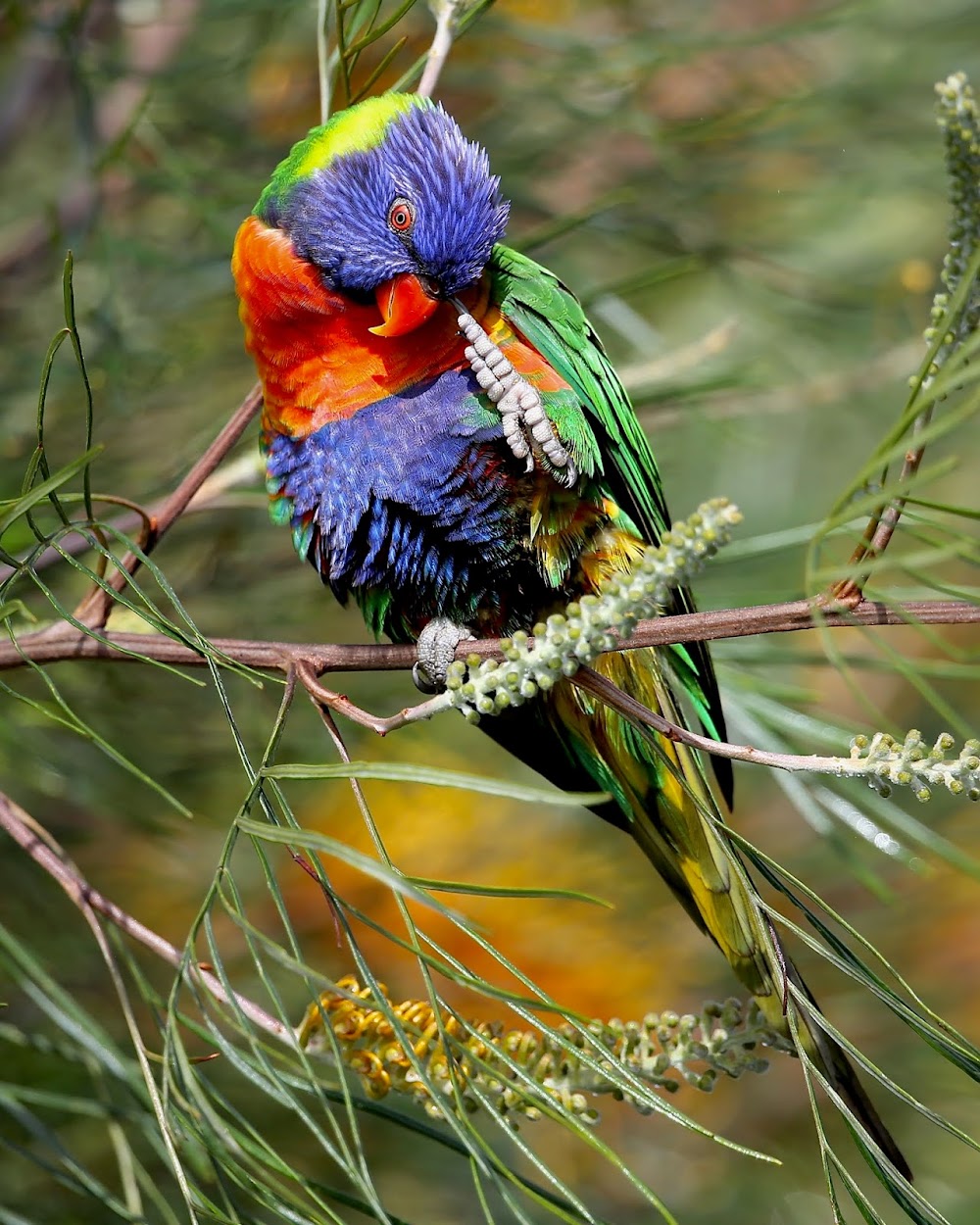Many eastern Australian gardens and urban parks are dominated by Noisy Miners which successfully drive out most small native birds leaving only the larger, bolder and more aggressive native birds present, such as Australian Magpies, Pied and Grey Butcherbirds, Pied Currawongs and Rainbow and Scaly-breasted Lorikeets. The Lorikeets are attracted by planted nectar producing trees and shrubs with Grevillea species being particularly popular with lorikeets.
At my daughter’s place on the NSW north coast a large Grevillea with orange flower spikes, a very popular garden species in the area, attracts Noisy Miners and Rainbow Lorikeets which visit the tree on a regular basis throughout the day for at least three months.
Much less frequently, Scaly-breasted Lorikeets also visited the Grevillea. It was obvious the Lorikeets, in small groups from pairs to four or five at most, were doing the rounds of the nectar producing flowering shrubs in the area. I did not see one species of honeyeater (excluding the Noisy Miner which is strictly speaking a Honeyeater) visit the shrub in all of the three months I kept an eye on bird activity at the shrub. The only other honeyeaters I saw in the area were the fairly large Blue-faced Honeyeaters which are themselves somewhat gregarious and aggressive and able to stand up for themselves against the ever present Noisy Miners.
I took the opportunity to photograph some of the Rainbow and Scaly-breasted Lorikeets that visited the large Grevillea.
Please click on photos to enlarge.
I have included just one photo of the highly successful but problematic Noisy Miner.
Rainbow Lorikeets have successfully adapted to urban development and have expanded their range. They are loud, highly energetic and very colourful.
Scaly-breasted Lorikeets are less numerous than Rainbows, more sombre in colour and have a smaller range.












No comments:
Post a Comment